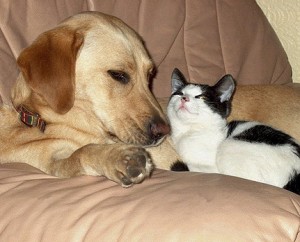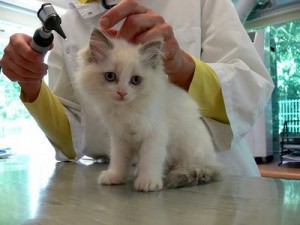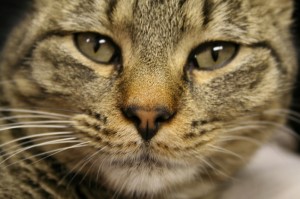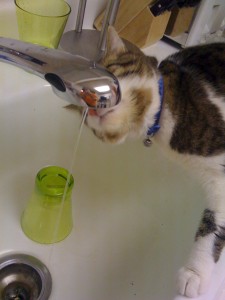Archive for April, 2012
Heartworm Meds for dogs and do cats take heartworm meds?
 What’s the difference between the oral or topical heart worm medication? The oral treatments come as pills or tasty, chewable tablets to give your dog once a month. They’re highly affective and some also protect against other parasitic worms. If your dog is fussy and won’t take pills, there are topical treatments You apply a drop or so to her skin between the shoulder blades once a month. These also control fleas and some control ticks too. They’re easy to apply but if part of the dose gets stuck on your dogs fur, or gets washed away, your dog might not be protected. Another pet can lick off the medication which is not good for either of them. Many veterinarians are prescribing heart worm medication for cats too. This medication is designed especially for felines.
What’s the difference between the oral or topical heart worm medication? The oral treatments come as pills or tasty, chewable tablets to give your dog once a month. They’re highly affective and some also protect against other parasitic worms. If your dog is fussy and won’t take pills, there are topical treatments You apply a drop or so to her skin between the shoulder blades once a month. These also control fleas and some control ticks too. They’re easy to apply but if part of the dose gets stuck on your dogs fur, or gets washed away, your dog might not be protected. Another pet can lick off the medication which is not good for either of them. Many veterinarians are prescribing heart worm medication for cats too. This medication is designed especially for felines.
Remember, you pets count
A Well Behaved Puppy
 To raise a well behaved puppy, first, take time to learn the developmental stages in a young dog’s life, like the difference between imprinting and socialization ,what happens in puppy puberty and what this alpha dog thing all about. As the alpha human, you want to know what to expect. The second thing you should do is keep that pup in school. Puppy Kindergarten, basic and advanced obedience and canine good citizen classes, so his little brain stays actively engaged in learning new skills. Sports training can be fun too. You may want to consider training your pup to be a pet therapy dog. Behavior is a life long endeavor and a great way to stay out of trouble.
To raise a well behaved puppy, first, take time to learn the developmental stages in a young dog’s life, like the difference between imprinting and socialization ,what happens in puppy puberty and what this alpha dog thing all about. As the alpha human, you want to know what to expect. The second thing you should do is keep that pup in school. Puppy Kindergarten, basic and advanced obedience and canine good citizen classes, so his little brain stays actively engaged in learning new skills. Sports training can be fun too. You may want to consider training your pup to be a pet therapy dog. Behavior is a life long endeavor and a great way to stay out of trouble.
Remember, your pets count!
The geriatric pet
 When your geriatric cat 0r d0g enters the “golden age of life,” he might slow down but his mind is still active. To help your senior pet stay happy and active, spend more time, not less doing the things he always enjoyed. Cats might not play as vigorously but any activity with you would be a treat. Grooming is always appreciated too. My cat Mollie is almost 13 and she loves to be brushed everyday. It’s something that she actually looks forward to. The sound of your voice is also comforting to an older pet. Keep giving dogs the chance to socialize. Just a slow walk in the park or an organized activity will do. Some senior pets may even teach a younger pet some of the wisdom that they learned along the way.
When your geriatric cat 0r d0g enters the “golden age of life,” he might slow down but his mind is still active. To help your senior pet stay happy and active, spend more time, not less doing the things he always enjoyed. Cats might not play as vigorously but any activity with you would be a treat. Grooming is always appreciated too. My cat Mollie is almost 13 and she loves to be brushed everyday. It’s something that she actually looks forward to. The sound of your voice is also comforting to an older pet. Keep giving dogs the chance to socialize. Just a slow walk in the park or an organized activity will do. Some senior pets may even teach a younger pet some of the wisdom that they learned along the way.
Remember, your pets count!
Taking your cat to the vet for an annual check up
 We often think that we only need to take our cat to the vet when he or she is ill. The fact is that we should get in the habit of taking him for a checkup at least once a year. This is important to your cats well being and longevity.
We often think that we only need to take our cat to the vet when he or she is ill. The fact is that we should get in the habit of taking him for a checkup at least once a year. This is important to your cats well being and longevity.
There is also lots of debate over annual booster shots. If a cat stays indoors, I believe that he shouldn’t need them that often although some veterinarians still recommend it. While you cat is at the vet, he will perform a physical examination and ask you questions about your cats overall health and whether you’ve noticed any changes. Potential problems could be detected during your cats visit.
During your visit, your veterinarian will look at & discuss the following:
- Dental examination
- Weight
- Skin & coat, general condition & lumps & bumps
- Ears & eyes
- Parasite control
- Heart
- Musculoskeletal exam
So don’t neglect getting your cat a checkup.
Remember,your pets count!
Dogs with irritable bowels
 Our dogs have a little bit of diarrhea and vomiting from time to time. As long as this is just occasional, short term stomach trouble, we usually don’t worry. Long term episodes of vomiting and diarrhea may be signs of irritable bowel syndrome. If your dog is diagnosed with I.B.S., your veterinarian may suggest a temporary change of diet. You could be told to substitute with bland foods such as steamed rice or pasta. Sometimes increased fiber in the diet or pro biotic supplements will help. Remember, irritable bowel is a syndrome, not a specific disease. Intolerance to certain foods can cause irritation as can stress. You and your veterinarian must work to find the cause and the solution. Your dog will thank you both!
Our dogs have a little bit of diarrhea and vomiting from time to time. As long as this is just occasional, short term stomach trouble, we usually don’t worry. Long term episodes of vomiting and diarrhea may be signs of irritable bowel syndrome. If your dog is diagnosed with I.B.S., your veterinarian may suggest a temporary change of diet. You could be told to substitute with bland foods such as steamed rice or pasta. Sometimes increased fiber in the diet or pro biotic supplements will help. Remember, irritable bowel is a syndrome, not a specific disease. Intolerance to certain foods can cause irritation as can stress. You and your veterinarian must work to find the cause and the solution. Your dog will thank you both!
Remember, your pets count!
Feeding a cat that has cancer
 Cats with cancer often lose their appetite and getting them to eat can be a challenge. Without nutritional support, they can lose weight so fast that it is hard for them to recover from the disease. The dietary needs of cats with cancer are not fully understood but experts recommend certain guidelines. Reduce the amount of simple carbohydrate and highly digestible protein in the diet and include more Omega 3 fatty acid. Don’t forget about water, this is most important nutrient. Offer moist food that smells great, warm it up and keep the animal’s environment calm and quiet. If your sick cat won’t eat, your veterinarian may suggest medications to increase appetite or if that fails, the use of a stomach tube.
Cats with cancer often lose their appetite and getting them to eat can be a challenge. Without nutritional support, they can lose weight so fast that it is hard for them to recover from the disease. The dietary needs of cats with cancer are not fully understood but experts recommend certain guidelines. Reduce the amount of simple carbohydrate and highly digestible protein in the diet and include more Omega 3 fatty acid. Don’t forget about water, this is most important nutrient. Offer moist food that smells great, warm it up and keep the animal’s environment calm and quiet. If your sick cat won’t eat, your veterinarian may suggest medications to increase appetite or if that fails, the use of a stomach tube.
Remember, your pets count!
The Mastiff
 The Mastiff is an ancient dog breed that was used as a guard dog. The Mastiff was a hunting companion for nobility and it was loved by peasants because it was a family and livestock protector. They were also used as arena gladiators where they participated in bull, bear, and dog combat. By the end of World War II, the Mastiff was nearly extinct but it was saved because of imports from the United States and Canada.
The Mastiff is an ancient dog breed that was used as a guard dog. The Mastiff was a hunting companion for nobility and it was loved by peasants because it was a family and livestock protector. They were also used as arena gladiators where they participated in bull, bear, and dog combat. By the end of World War II, the Mastiff was nearly extinct but it was saved because of imports from the United States and Canada.
The Mastiff is a massive, muscular and powerful dog.It’s also one of the heaviest dog breeds. Males can weigh more than 200 pounds. They have a dominant demeanor and are fearless, alert and extremely courageous. These dogs are extremely loyal and very devoted to their family. Mastiffs need lots of love, companionship and attention. They do not do well when left alone for long periods of time. The Mastiff does well with older, considerate children in the household. They only do well with household pets that they have bee raised with. They are naturally protective of their family and home and are not recommended for the novice, inexperienced or passive owner.
Remember, your pets count!
Two cats, one household
Two cats cuddling together always looks so cute and cat owners always hope for this scenario when introducing another cat. I thought that this would be the case when I introduced my younger cat Millie to my older cat Mollie about seven years ago. To my surprise, pure mayhem broke loose! Mollie hated Millie. Let the territorial control begin! Swatting, hiding hissing followed by cries for help from my poor little Millie. To this day, Mollie does not like Millie. She will stand guard at doorways so Millie can’t get through. The latest battle is the fight for the running water in the shower. They both love to drink the water when I turn it on for them mornings before I take a shower, but now they know my game. They know the time I’m going to turn it on and race to be first. Yesterday we almost had a cat fight at the shower. Millie raced to be the first in line to get a taste of that cool, running water but Mollie dashed after her, hissed, swatted and chased Millie out of the bathroom. Guess who got at the water first? It’s too late for Mollie and Millie to be friends but not too late if you’re thinking of integrating another cat into your household.
Here are some combinations that may have better results that I had.
Try not to introduce a new female to another female, from experience, “the girls” love to fight.
Males introduced to females tend to get along better. The transition will be much smoother if both cats are about the same age. The younger, the better.
1.Isolate the two at first.
2 Get them familiarized with scents, such as towels, rubbed on each cat, then left in the area of the other cat, while the cats are being kept separately.
3.Let them see each other with no physical contact.
4.Swap places . Put the older cat where the newer cat was and then do the reverse.
5.Start with short, supervised visits then gradually increase the visiting time.
6.Supervise them closely for awhile after they’re together.
7. GOOD LUCK!
Examining your pets history
 When your pet meets a new veterinarian, many questions will come up regarding your pets health history. The doctor will want to know his age, weight, gender, whether or not he’s be neutered and his vaccination history. It’s important to share information and medications your pets is taking, if he’s ever had a bad reaction to a vaccine or antibiotic or if he’s ever had a seizure. The main focus will be on the reason for your current visit. Is your pet exhibiting any health symptoms such as vomiting or diarrhea? Does he have any unusual lumps or bumps, or does he have behavioral issues? To give the best possible care, the veterinarian will want to learn everything about the new patient.
When your pet meets a new veterinarian, many questions will come up regarding your pets health history. The doctor will want to know his age, weight, gender, whether or not he’s be neutered and his vaccination history. It’s important to share information and medications your pets is taking, if he’s ever had a bad reaction to a vaccine or antibiotic or if he’s ever had a seizure. The main focus will be on the reason for your current visit. Is your pet exhibiting any health symptoms such as vomiting or diarrhea? Does he have any unusual lumps or bumps, or does he have behavioral issues? To give the best possible care, the veterinarian will want to learn everything about the new patient.
Remember, your petss count!

